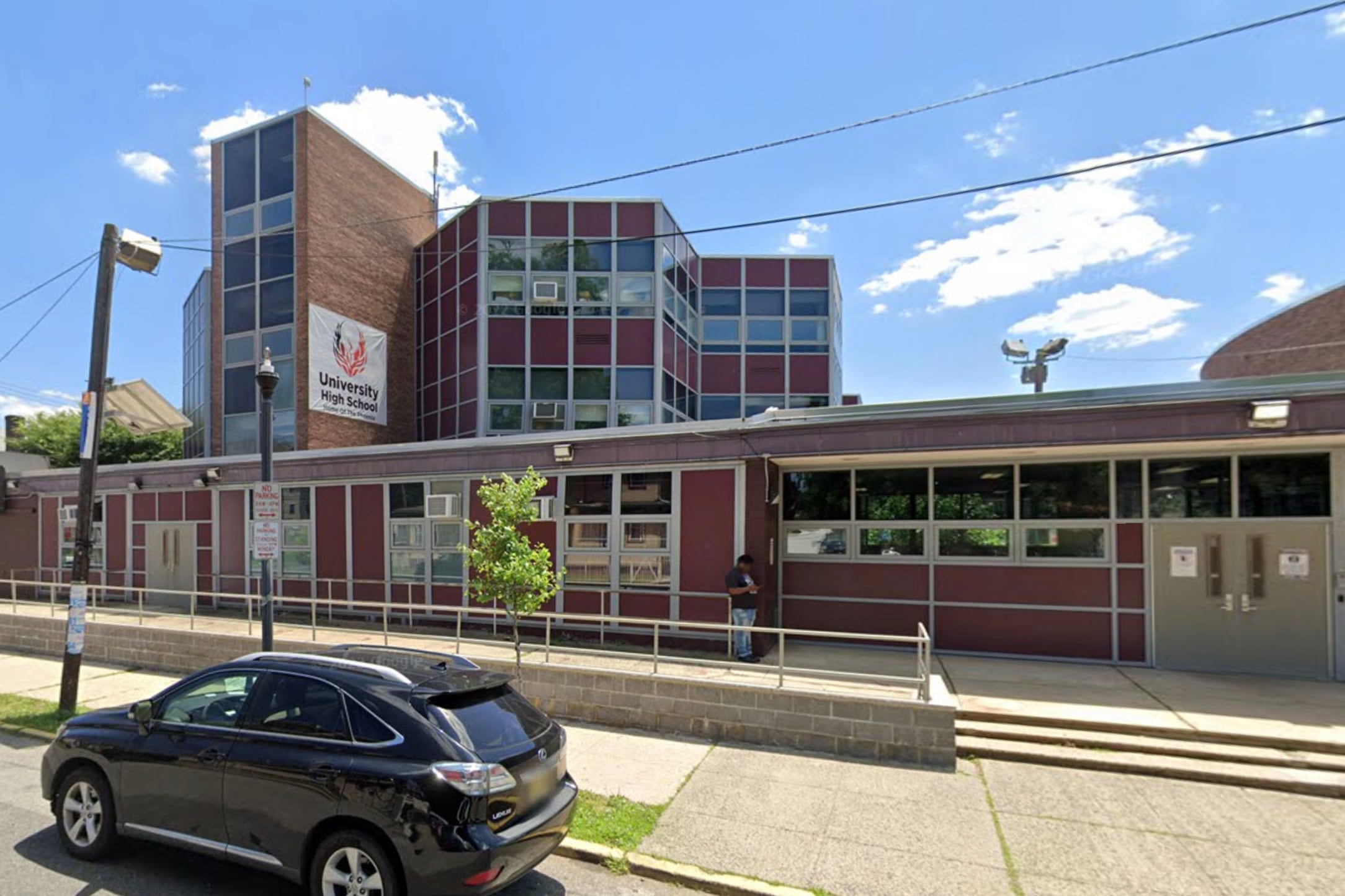Sign up for Chalkbeat Newark’s free newsletter to keep up with the city’s public school system.
The state agency responsible for funding school construction projects in Newark will spend nearly $153 million to build a new South Ward high school and relocate a nearby elementary school.
But the Schools Development Authority says the project is in its early stages of development and it’s unclear when the plans will begin as building designs, construction proposals, and timelines have yet to be completed.
The plans call for the construction of a new University High School and the relocation of Hawthorne Avenue Elementary School students to the existing high school building, according to state and district plans.
They also call for the demolition of Hawthorne Avenue Elementary, one of the district’s oldest buildings, which sits a block away from the existing University High School.
The new high school will be located on the SDA-owned site on Hawthorne Avenue and Demarest Street where the community-run Hawthorne Avenue farm partially occupies the land, according to the SDA’s project charter. Since 2012, the SDA has leased the land to the Greater Newark Conservancy, which manages the 3-acre farm on Hawthorne Avenue after previous plans to build a new school did not occur.
It’s unclear if the farm will remain on the property and at what point of the project Hawthorne Avenue Elementary students will be relocated.
“We can’t take government money and build a school,” Superintendent Roger León said in June. “Now, there are other entities that can do that, but schools like public schools, like this one, we’re not allowed to do that.”
The state’s Schools Development Authority is responsible for paying for construction projects in Newark Public Schools and 30 other high-poverty districts due to a 1985 state Supreme Court decision in Abbott v. Burke. District officials have long raised concerns about Newark’s aging buildings and shuttered schools under state control.
When León took the helm in 2018, he made a plan to expand the district and reclaim former public school buildings while stopping the expansion of charter schools in Newark. Charter schools, which are privately run but publicly funded schools, make up one of the district’s largest expenses in the upcoming budget and have been at the center of district lawsuits and appeals to stop their expansion.
University High School was built in 1956 with an addition added in 1970, according to district records. In September 2023, the school enrolled 447 ninth to 12th grade students, according to state fall data. The new high school building is set to be a 190,000-square-foot facility with plans to accommodate 920 students, according to the state’s project plans.
The district’s long-range facilities plan deems the University High School building in need of repairs to its infrastructure, HVAC system, and facade, among other repairs. It also assesses its replacement costs at around $33 million. Hawthorne Avenue was built in 1895 and is home to 570 students in grades pre-K to 8th grade, according to a state memo.
Through the SDA’s 2022 capital plan, Newark was approved for two school projects, including the new University High School project, to address district overcrowding, based on 2019-2021 enrollment numbers, according to Edye Maier, the SDA’s director of communications. Since 2006, the state has built eight new schools for Newark, and one other property, which later became the Nelson Mandela Elementary School, was given to the district.
In 2022, the SDA granted the district two new pre-K through eighth grade schools, along with 14 other projects across the state to address high-priority needs and overcrowding. One of those schools is the recently opened Nelson Mandela Elementary School, housed in the former University Heights Charter School building, which welcomed 134 pre-K-3rd grade students in September 2023, according to fall state enrollment data.
The charter school closed in 2022 after it struggled to improve students’ academic performance, faced declining enrollment, and had an unstable leadership team.
Instead of a second pre-K to eighth grade school, the district negotiated with the state to move forward with the construction of a new University High School building.
The SDA is also replacing 13 of Newark’s oldest school buildings but León said the deal leaves out 20 schools. Overall, the state agency estimated that more than $7 billion is needed to address current construction needs in the 31 high-poverty districts. The state legislature provides funding to the SDA on a “pay as you go basis” with no long-term funding to support their work.
Jessie Gómez is a reporter for Chalkbeat Newark, covering public education in the city. Contact Jessie at jgomez@chalkbeat.org.





